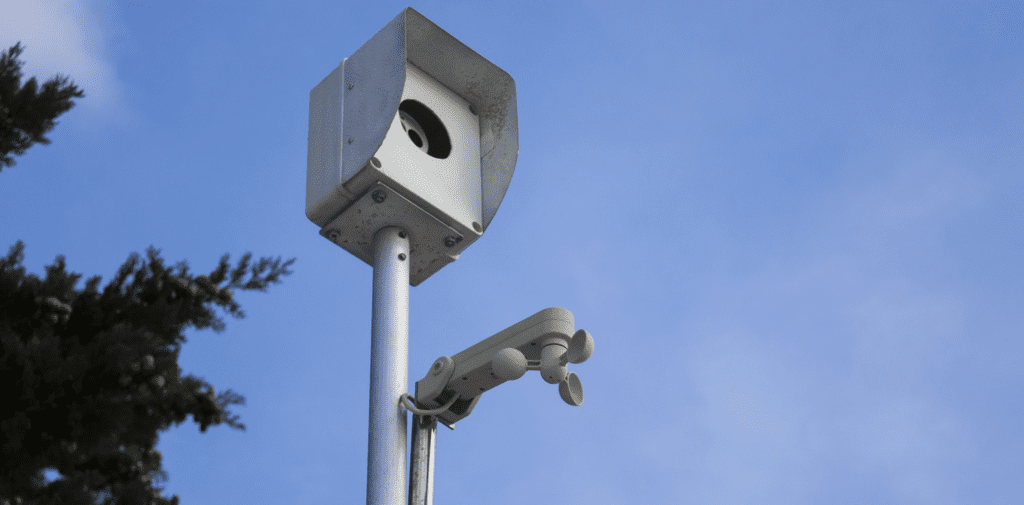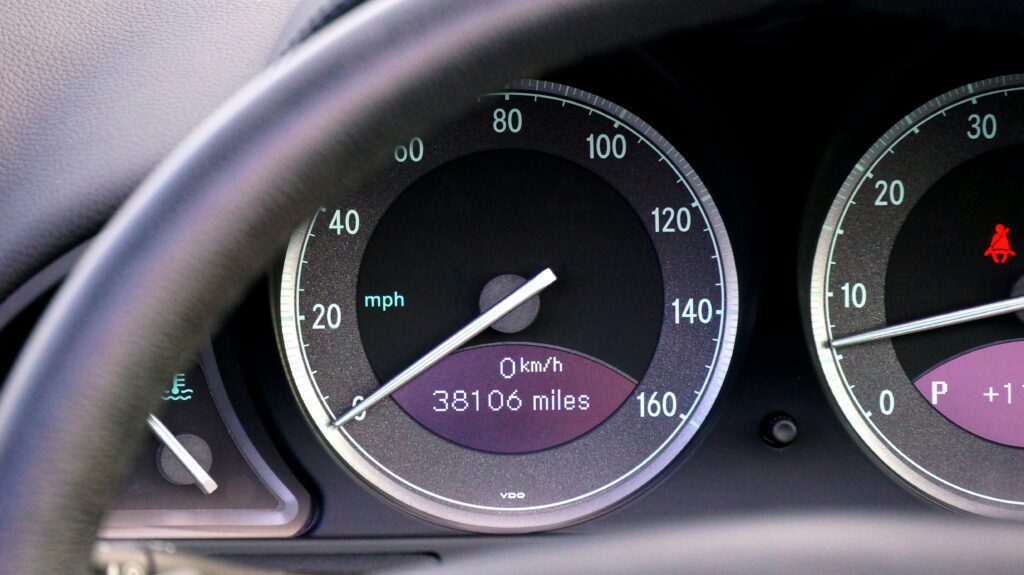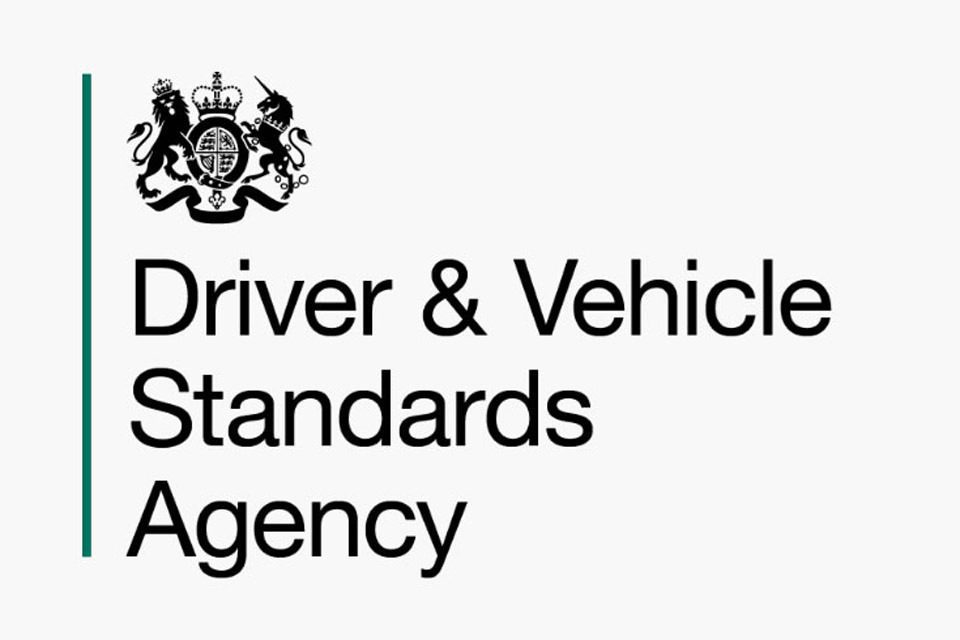
Having the ability to drive is fantastic. It gives you the liberty to jump in your car and journey wherever you fancy, whenever you please.
However, there’s a risk of becoming too complacent or overconfident when behind the wheel, leading to lapses in judgment. A prevalent mistake many drivers in the UK make is speeding.
There are times, perhaps when you’re running behind schedule or feeling a bit agitated, that you might press the accelerator just a tad more and go over the designated speed limit.
It’s essential to understand that such behaviour can quickly become problematic. Just because your car can reach lofty speeds doesn’t mean it’s wise to do so.
We’ve assembled a collection of invaluable tips to help you stop speeding. Let’s get started!
What the Law Says About Speeding
Many drivers might underestimate the seriousness of speeding, but the law sees it differently. Speed limits are established for specific reasons, and there are repercussions for not adhering to them. This could mean implications for one’s driving record, financial outlay, and personal safety.

Should you be caught being over the speed limit by speed cameras or traffic police, here’s what you might face:
- At least 3 points added to your licence
- A minimum fine of £100
- An option for a court hearing if you choose to challenge the decision.
On occasion, there’s an offer to participate in a speed awareness course. While this might seem like a way out of the other penalties, the course fee typically matches the initial fine.
Try these Tips to Stop Speeding
Revisit the Speed Limits
Knowing the speed limit at all times undoubtedly makes it simpler to adhere to. As a qualified driver, you ought to be well-versed in this by now. However, we understand the occasional uncertainty, especially when certain roads lack clear signage.
Moreover, even if the speed limit is distinctly displayed, it’s crucial to use common sense.
For instance, if you come across a national speed limit sign (a white circle with a diagonal black band) on a rural road, it generally denotes a 60mph limit. But don’t just accelerate heedlessly up to that limit.

Image source: Crown Copyright (Open Government Licence v3.0)
Think sensibly! On narrow roads with blind bends, cruising at 60mph might be tremendously perilous. Naturally, exceeding this speed is a no-go.
Refresh your knowledge with the Highway Code and ensure you’re fully aware of the limits.
Understanding Your Speedometer
It might seem obvious, but it’s crucial to emphasise the importance of monitoring your speedometer whilst driving. This doesn’t imply that you should fixate on it constantly, as your primary focus should always be the road ahead.

Image source: Photo by Mike Bird
However, it’s beneficial to periodically cast a quick glance towards the speedometer to ascertain that you’re maintaining a safe and legal speed. Integrating this into your regular driving habits will ensure that it becomes an instinctive part of your journey in no time.
Allocate Sufficient Time
It’s likely that you have a watch or clock at your disposal. One primary reason individuals tend to drive too fast is because they’ve found themselves behind schedule and are attempting to recover lost time. However, it’s vital to ponder this: why should other road users be endangered due to your lapse in time management?

We fully understand—it’s incredibly frustrating to be caught in congestion or find yourself behind a particularly slow driver when you’re on a tight schedule. Nonetheless, this does not grant you the right to become a hazard on the motorway.
Driving at excessive speeds often leads to other dangerous behaviours, such as tailgating or using the horn without just cause. Such actions can come off as overly aggressive, and it’s simply unjust to subject other motorists to this.
The most effective strategy? Always ensure you allocate ample time for your journey. If, in the rare event, you unavoidably find yourself running behind, it’s essential to remain composed and recognise that it’s not the responsibility of others on the road.
Should your time be of such significance, it’s imperative to manage it more proficiently!
Maintain a Calm Pace
It’s astonishing to note that some individuals don’t require the pretext of running behind schedule to flout the speed limit. Whether labelled as ‘boy racers‘, or simply those who are inherently impatient or quick-tempered, there are always those who feel the urge to push their car’s limits. It’s crucial not to emulate this behaviour.

Driving is not about competing or hastily completing a journey. If you find yourself persistently tempted to speed up, even when it’s unwarranted, it’s a good sign to take a step back and ease your pace.
View your time in the car as a chance for meaningful personal reflection. Switch on the radio, tune into a cherished podcast, or simply relish the tranquillity and engage in introspection. Embrace the journey, not just the destination.
Consider the Consequences
When pondering the need for speed while driving, it’s important to reflect on the reasons behind speed limits. These regulations are implemented for safety, ensuring a harmonious flow of traffic and reducing the risk of accidents.
Driving at excessive speeds significantly reduces your reaction time, rendering you less equipped to address unforeseen road hazards. The faster one drives, the shorter the time they have to spot potential dangers and act accordingly.
Moreover, the velocity at which a vehicle travels amplifies the consequences of any potential collision. An accident at a higher speed often leads to a more severe impact, thereby increasing the likelihood of injuries, or in the worst cases, fatalities.
Repeatedly speeding without facing immediate repercussions can foster a false sense of security. Some drivers may fall into the trap of overestimating their abilities, assuming their skills are superior enough to consistently evade danger. However, this illusion shatters the moment an unexpected incident occurs.

The question then arises: is the risk truly worth the reward? Even if one manages to reach their destination a tad sooner by speeding, the advantage is minimal, often just a few minutes.
Contrastingly, the potential downsides are manifold and severe. Hence, it’s always wiser to adhere to the prescribed speed limits and prioritise safety above all.
Don’t let others influence your driving
On the road, one may encounter a variety of drivers, including those who are impatient or aggressive. Recollect those impatient drivers we mentioned earlier? They may tailgate you, express their impatience with animated hand gestures or make repeated attempts to overtake you.
It’s paramount to remain composed and adhere to the rules, regardless of external pressures. If another driver’s actions are causing unease or make you feel threatened, consider providing them a chance to pass when it’s safe and feasible.

Similarly, while passengers might voice their opinions on your driving style, it’s crucial to remember that the driver has the ultimate responsibility for the vehicle’s safety. If they are uncomfortable with your adherence to speed limits, they have the option to disembark and pursue alternative modes of transportation.
You, as the driver, have the authority when you’re behind the wheel. Speed limits are instituted for valid reasons, so it’s unwise to simply “go with the flow” of other drivers.
However, it’s also worth noting that driving isn’t about constantly seeking the lowest speed. Excessively slow driving can be just as perilous as speeding, especially in busy or high-traffic areas. Driving too slowly can impede the flow of traffic and create potential hazards.
It’s always best to maintain a speed consistent with the road conditions and within the defined speed limits.
Using Cruise Control
If your car is equipped with a cruise control system, it’s beneficial to utilise it to its fullest potential. When conditions are safe and suitable, and once you’ve achieved your preferred speed, allow the system to manage your car’s pace.

By doing so, you can consistently adhere to the speed limit of the particular road you’re traversing. This not only promotes fuel efficiency but also reduces the driver’s workload, allowing for a more relaxed driving experience.
Remember, however, to always remain attentive and ensure that the road conditions are appropriate for cruise control usage.
Stick to the speed limit
Upon receiving your qualification from the DVSA, you made an implicit agreement to adhere to the road regulations. One of the most fundamental rules is abiding by the speed limit. Regardless of how prevalent speeding might be among some drivers, it’s crucial to remember that it is both dangerous and unlawful.

Always aim to drive within the designated speed limits, adjusting only when road or weather conditions make it necessary to drive at reduced speeds for safety reasons.
Follow our advice, and you’ll not only foster good driving habits but also ensure you remain a proficient and safety-conscious driver throughout your driving journey.
Frequently asked questions
Avoiding speeding is crucial for safety. Speeding increases the risk of accidents, reduces reaction time, and can result in severe injuries or fatalities. It also helps you avoid fines and penalty points on your driving licence.
In the UK, the common speed limits are:
- 30 mph in built-up areas
- 60 mph on single carriageways
- 70 mph on dual carriageways and motorways
Always look for signs indicating specific speed limits.
Regularly check your speedometer to stay aware of your speed. Many modern cars also have speed limiters and cruise control features that can help you maintain a constant, safe speed.
Consequences include fines, penalty points on your licence, and potential driving bans.
Severe cases can lead to court appearances, higher insurance premiums, and even imprisonment for extreme speeding offences.
Many sat navs have speed limit warnings that alert you when you exceed the limit.
Ensure your device is updated regularly to maintain accurate speed limit information.
Yes, there are several apps available for smartphones that monitor your speed and alert you if you exceed the limit.
Apps like Waze, Google Maps, and Speedometer can be useful tools.
In built-up areas, frequently check your speedometer, be aware of your surroundings, and follow traffic flow.
Use the “two-second rule” to maintain a safe distance from the vehicle ahead, which can help regulate your speed.
Cruise control allows you to set a specific speed, which your car will maintain without you needing to keep your foot on the accelerator.
This feature is especially useful on motorways and long, straight roads.
Being mindful and conscious of your driving habits can significantly help prevent speeding.
Stay focused on the road, be aware of speed limits, and adjust your speed according to road conditions and traffic.
When driving in unfamiliar areas, use a sat nav or map to stay informed about speed limits.
Pay extra attention to road signs and drive conservatively until you are comfortable with the surroundings.
If you find yourself speeding unintentionally, consider using a speed limiter or cruise control.
Practice being more aware of your speedometer and set reminders to check your speed regularly.
Being aware of road signs, traffic conditions, and potential hazards can help you adjust your speed appropriately.
Anticipate changes in speed limits and prepare to slow down when approaching built-up areas or junctions.
Attending a speed awareness course can educate you on the dangers of speeding and improve your driving habits.
It may also help you avoid penalty points on your licence for minor speeding offences.
By consistently adhering to speed limits and practicing safe driving habits, you set a positive example for other drivers, including younger or less experienced drivers who may look to you for guidance.


